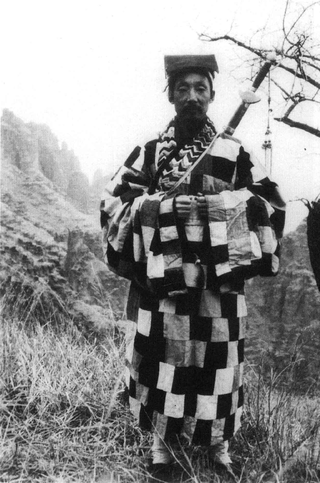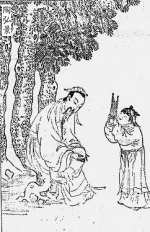
Taoism or Daoism is a diverse tradition indigenous to China, variously characterized as both a philosophy and a religion. Taoism emphasizes living in harmony with the Tao—generally understood as being the impersonal, enigmatic process of transformation ultimately underlying reality. The concept originates in the Chinese word 道, which has numerous related meanings: possible English translations include 'way', 'road', and 'technique'. Taoist thought has informed the development of various practices within the Taoist tradition and beyond, including forms of meditation, astrology, qigong, feng shui, and internal alchemy. A common goal of Taoist practice is self-cultivation resulting in a deeper appreciation of the Tao, and thus a more harmonious existence. There are different formulations of Taoist ethics, but there is generally emphasis on virtues such as effortless action, naturalness or spontaneity, simplicity, and the three treasures of compassion, frugality, and humility. Many Taoist terms lack simple definitions and have been translated in several different ways.

The Three Pure Ones, also translated as the Three Pure Pellucid Ones, the Three Pristine Ones, the Three Divine Teachers, the Three Clarities, or the Three Purities, are the three highest gods in the Taoist pantheon. They are regarded as pure manifestations of the Tao and the origin of all sentient beings, along with the "lords of the Three Life Principles or 'Breaths' (qi)". They were also gods who were "associated with the sky, the earth and the underworld."

A daoshi, translated as Taoist priest, Taoist monk, or Taoist professional is a priest in Taoism. The courtesy title of a senior daoshi is daozhang, and a highly accomplished and revered daoshi is often called a zhenren.

The Lingbao School, also known as the School of the Sacred Jewel or the School of Numinous Treasure, was an important Daoist school that emerged in China in between the Jin dynasty and the Liu Song dynasty in the early fifth century CE. It lasted for about two hundred years until it was absorbed into the Shangqing and Zhengyi currents during the Tang dynasty. The Lingbao School is a synthesis of religious ideas based on Shangqing texts, the rituals of the Celestial Masters, and Buddhist practices.
The Way of the Celestial Masters or the Heavenly Masters Sect is a Chinese Taoist movement that was founded by Zhang Daoling in 142 AD. Its followers rebelled against the Han dynasty, and won their independence in 194. At its height, the movement controlled a theocratic state in what is now Sichuan.
The Shangqing School (Chinese:上清), also known as Supreme Clarity, Highest Clarity, or Supreme Purity, is a Daoist movement that began during the aristocracy of the Western Jin dynasty. Shangqing can be translated as either 'Supreme Clarity' or 'Highest Clarity.' The first leader of the school was a woman, Wei Huacun (251-334). According to her Shangqing hagiographers, her devotion to Daoist cultivation so impressed a number of immortals that she received revelations from them 31 volumes of Daoist scriptures which would become the foundation of Shangqing Daoism. Later, Tao Hongjing, a man, (456-536) structured the theory and practice and compiled the canon. He greatly contributed to the development of the school that took place near the end of the 5th century. The mountain near Nanjing where Tao Hongjing had his retreat, Maoshan, today remains the principal seat of the school.
The history ofTaoism stretches throughout Chinese history. Originating in prehistoric China, it has exerted a powerful influence over Chinese culture throughout the ages. Taoism evolved in response to changing times, with its doctrine and associated practices being revised and refined. The acceptance of Taoism by the ruling class has waxed and waned, alternately enjoying periods of favor and rejection. Most recently, Taoism has emerged from a period of suppression and is undergoing a revival in China.

Zhengyi Dao, also known as the Way of Orthodox Unity, Teaching of the Orthodox Unity, and Branch of the Orthodox Unity is a Chinese Taoist movement that traditionally refers to the same Taoist lineage as the Way of the Five Pecks of Rice and Way of the Celestial Masters, but in the period of the Tang dynasty and its history thereafter. Like the Way of Celestial Masters, the leader of Zhengyi Taoism was known as the Celestial Master.

The Dragon Gate sect of the Complete Reality School of Taoism incorporates elements of Buddhism and Confucianism into a comprehensive form of Taoism.
The Xiuzhen tu is a Daoist diagram of the human body illustrating the preventative Chinese medical principles called Neidan'internal alchemy', incorporating Chinese astrology, and cosmology.

The Quanzhen School is currently one of the two dominant denominations of Daoism in mainland China. It originated in Northern China in 1170 under the Jin dynasty (1115–1234).

Monica Esposito was an Italian scholar of Chinese religion specializing in the history, texts and practices of Daoism from the 15th to 20th centuries).

Chinese ritual mastery traditions, also referred to as ritual teachings, or Folk Taoism, or also Red Taoism, constitute a large group of Chinese orders of ritual officers who operate within the Chinese folk religion but outside the institutions of official Taoism. The "masters of rites", the fashi (法師), are also known in east China as hongtou daoshi (紅頭道士), meaning "redhead" or "redhat" daoshi, contrasting with the wutou daoshi (烏頭道士), "blackhead" or "blackhat" priests, of Zhengyi Taoism who were historically ordained by the Celestial Master.
The following outline is provided as an overview of and topical guide to Taoism:
Bugang is a Daoist ritual dance or walk, based upon the Yubu "Steps of Yu" tradition, in which a Taoist priest paces through a supernatural pattern, such as stars in the Big Dipper or numbers in the Loshu magic square. Texts from the Shangqing School revelations contain the earliest descriptions of bugang, frequently with the practitioner pacing among constellations, especially the Big Dipper's stars. When religious Daoism began during the Six Dynasties period, the expression bugang tadou 步罡踏斗 "pacing the guideline and treading on the Dipper" became popular.

Tao Hongjing (456–536), courtesy name Tongming, was a Chinese alchemist, astronomer, calligrapher, military general, musician, physician, and pharmacologist during the Northern and Southern dynasties (420–589). A polymathic individual of many talents, he was best known as a founder of the Shangqing "Highest Clarity" School of Taoism and the compiler-editor of the basic Shangqing scriptures.
Taoist philosophy also known as Taology refers to the various philosophical currents of Taoism, a tradition of Chinese origin which emphasizes living in harmony with the Dào. The Dào is a mysterious and deep principle that is the source, pattern and substance of the entire universe.

The roles of women in Taoism have differed from the traditional patriarchy over women in ancient and imperial China. Chinese women had special importance in some Taoist schools that recognized their transcendental abilities to communicate with deities, who frequently granted women with revealed texts and scriptures. Women first came to prominence in the Highest Clarity School, which was founded in the 4th century by a woman, Wei Huacun. The Tang dynasty (618–907) was a highpoint for the importance of Daoist women, when one-third of the Shangqing clergy were women, including many aristocratic Taoist nuns. The number of Taoist women decreased until the 12th century when the Complete Perfection School, which ordained Sun Bu'er as the only woman among its original disciples, put women in positions of power. In the 18th and 19th centuries, women Taoists practiced and discussed nüdan, involving gender-specific practices of breath meditation and visualization. Furthermore, Taoist divinities and cults have long traditions in China, for example, the Queen Mother of the West, the patron of xian immortality, He Xiangu, one of the Eight Immortals, and Mazu, the protectress of sailors and fishermen.

Religion in the Song dynasty (960–1279) was primarily composed of three institutional religions: Confucianism, Taoism, and Buddhism, in addition to Chinese folk religion. The Song period saw the rise of Zhengyi Taoism as a state sponsored religion and a Confucian response to Taoism and Buddhism in the form of Neo-Confucianism. While Neo-Confucianism was initially treated as a heterodox teaching and proscribed, it later became the mainstream elite philosophy and the state orthodoxy in 1241.

Alex Mieza, Taoist name Zi Xiao is an international master of traditional Chinese martial arts, Qigong and Internal Alchemy. Mieza represents Sanfeng Pai school of Wudang Taoism, China.
















